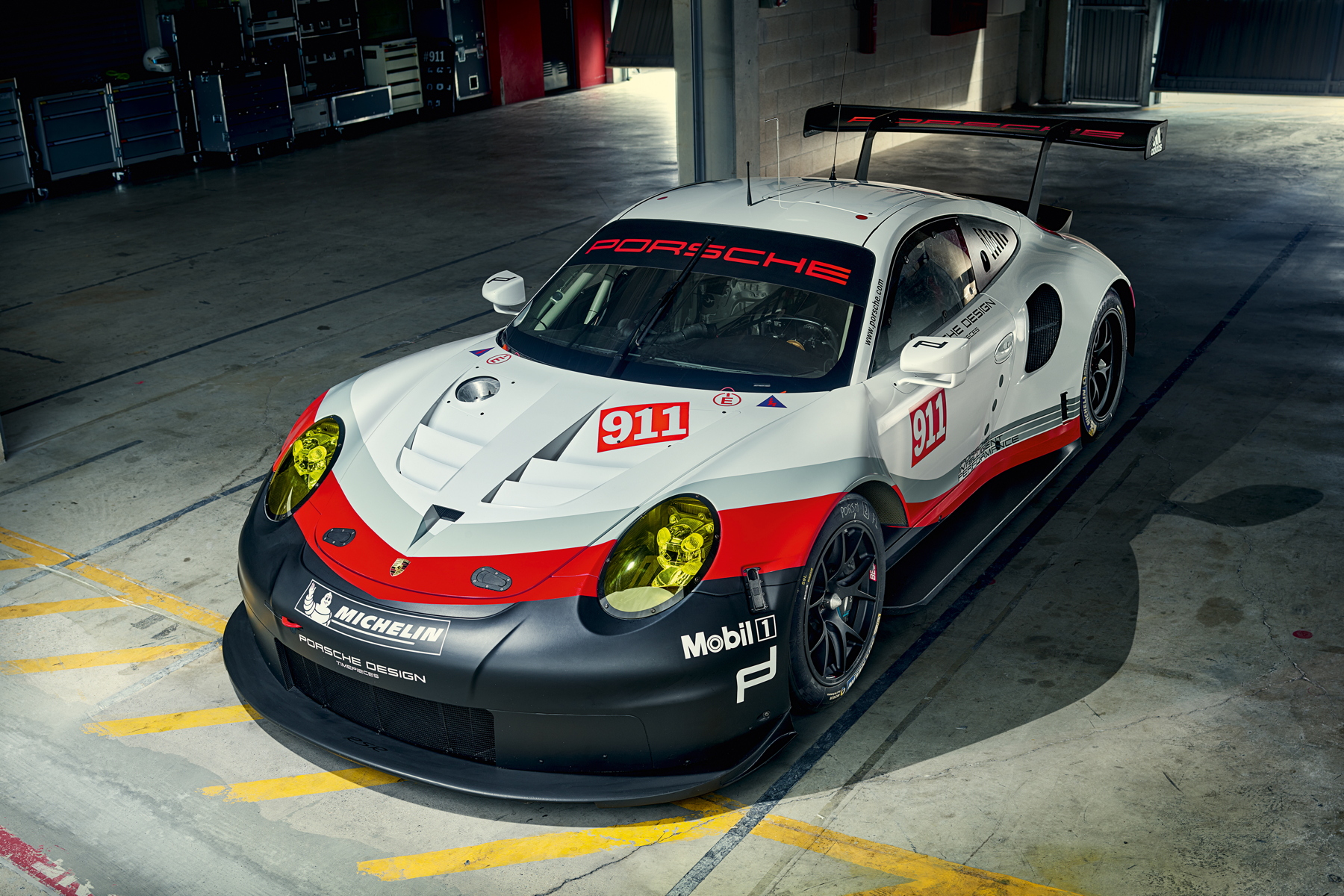The new 2017 Porsche 911 RSR in numbers
Dr Frank-Steffen Walliser, Head of Porsche Motorsport, has described the new 2017 Porsche 911 RSR as “the biggest evolution in the history of our top GT model”.
This statement regards, in part, Porsche’s decision to move the engine in the new LM-GTE contender ahead of the rear axle (for the first time since the 911 GT1 two decades ago).
However, Weissach hasn’t stopped there with the new Porsche 911 RSR. The motorsport department has optimised almost every area of the GT racer – from the engine itself to the aerodynamics – as a quick look at some of the car’s vital statistics shows:
| 2017 Porsche 911 RSR | 2013-2016 Porsche 911 RSR | |
| Engine capacity | 4,000cc | 3,996cc |
| Bore | 102mm | 102.7mm |
| Stroke | 81.5mm | 80.4mm |
| Valves per cylinder | Four | Four |
| Max. power | 510hp | 470hp |
| Front brakes | 390mm discs; six-piston calipers | 380mm discs; six-piston calipers |
| Rear brakes | 355mm discs; four-piston calipers | 355mm disc; four-piston calipers |
| Front wheels | 12.5×18-inch | 12.5×18-inch |
| Rear wheels | 13×18-inch | 14×18-inch |
| Gearbox | Six-speed sequential | Six-speed sequential |
| Weight | 1,243kg | 1,245kg |
| Power-to-weight | 410hp/tonne | 378hp/tonne |
Of course, the numbers don’t tell the whole story. Porsche has been typically cagey with certain details (as you would expect any manufacturer to be with a brand new racing car).
In lieu of any official rpm figures, the longer stroke of the new DFI flat six would suggest that it may run at slightly slower engine speeds. Despite developing nearly ten per cent more power, this would help to put less stress on the internal components of the 2017 RSR’s powerplant.
It’s also interesting to note that, with the significant shift in the new car’s weight distribution, Porsche has had to increase the front disc size by 10mm in order to deal with the increased load on the front axle under braking.


Comments (0)